Birthstone Guide
January
Garnet
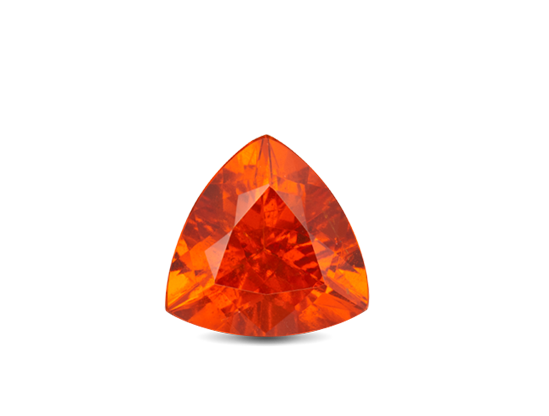
This gem is available in a rainbow of colors, from the deep red Bohemian garnet to the vibrant greens of the Russian Demantoid and African Tsavorite. We also see it appear in the oranges and browns of Spessartite and Hessonite from Namibia and Sri Lanka and in the subtle pinks and purples of Rhododendron.
Legend says garnets light up the night and protect their owners from nightmares. Garnets have long been carried by travelers to protect against accidents far from home. Garnet may be the birthstone for January, but its stunning variety of colors has made it a gift for all occasions.
February
Amethyst
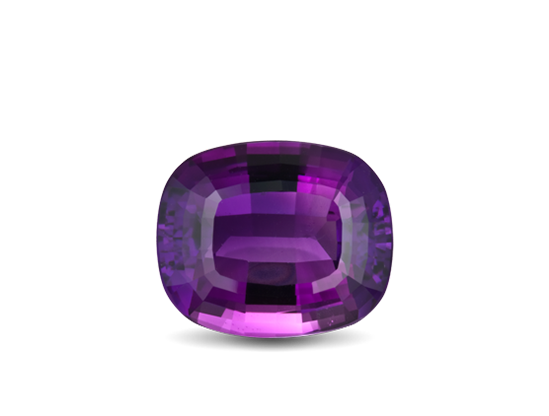
The ancient Greeks and Romans believed Amethyst would ward off the intoxicating powers of Bacchus and keep the wearer clear-headed and quick-witted. For centuries, Amethyst has been associated with many myths and legends as well as religions in numerous cultures.
Not only is this gem known for its beautiful color, but it is also widely available in different shapes and sizes — which makes it more affordable. Amethyst complements both warm and cool colors, helping it look fabulous set in both yellow and white metals. This unique ability enhances almost every color in your wardrobe.
March
Aquamarine
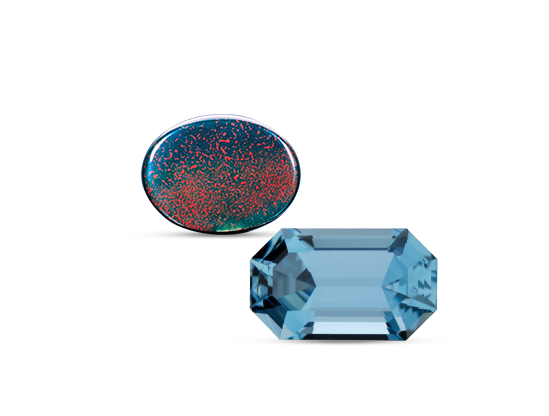
The name Aquamarine immediately brings to mind a stunning pastel sky blue or the bright color of the sea. For centuries, this timeless gemstone has been a symbol of youth, hope, health and fidelity. Since this gemstone is the color of water and the sky, it is said to embody eternal life. It was long thought that Aquamarine has a soothing influence on married couples, making it a great anniversary gift.
Aquamarines are found in a range of blues, from a pale pastel to a greenish-blue to a deep color. Darker shades of blue are increasingly rare and make the value increase. Aquamarine is frequently a pastel gemstone. While the color can be more intense in larger gemstones, smaller aquamarines tend to be less vivid.
April
Diamond
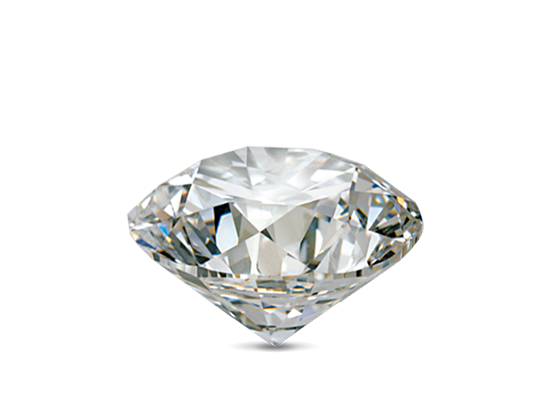
Since ancient times, diamonds have been admired objects of desire. Formed 100 miles beneath the Earth’s surface over a billion years ago, diamonds are the hardest gem of them all. Some say diamonds were created when bolts of lightning struck rocks, while others say the gem possesses healing powers. For centuries, diamonds have been adorned by women and men and regarded as the ultimate gift and a symbol of eternal love.
Today, diamonds are still admired all around the world. Until the middle of the 20th century, there was no standard by which diamonds could be evaluated. GIA created the first and now globally accepted standard for describing diamonds: color, clarity, cut and carat weight. Today, the four Cs of diamond quality are the universal method for assessing the quality of any diamond, anywhere in the world.
May
Emerald
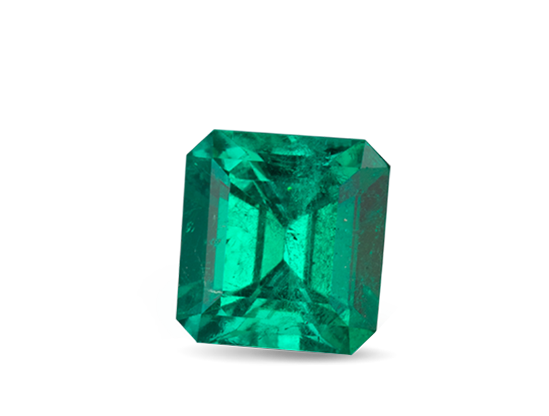
Green is the color of spring and has long symbolized love and rebirth. As the gem of Venus, it is also considered to aid in fertility.
Cleopatra, Egypt’s tempestuous female monarch, was as famous for wearing Emeralds as Liz Taylor is for wearing diamonds. Ancient Egyptian mummies were often buried wearing an Emerald carved with the symbol of verdure – flourishing greenness – on their necks to symbolize eternal youth.
A deeper and more vivid color of green signifies a more valuable gemstone. The most valuable and beautiful Emeralds exhibit an intense bluish hue in addition to their bold green color. Emeralds, among the rarest of gems, are almost always found with birthmarks, also known as inclusions. Some inclusions are expected and do not detract from the value of the stone as much as with other gemstones.
June
Pearls
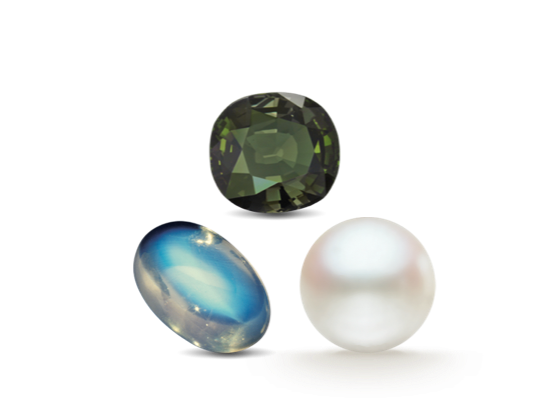
Throughout human history, mankind has admired and worshipped pearls. Persian mythology referred to pearls as the “tears of the gods,” while ancient Chinese legend claimed the moon held the power to create pearls, instilling them with its celestial glow and mystery.
Pearls are unique because they are the only gemstone formed within a living creature. Since natural pearls are rare and difficult to recover from the ocean’s depths, man invented the technique of culturing salt and freshwater pearls from mollusks carefully seeded with irritants similar to those produced by nature.
Cultured pearls come in many beautiful colors, ranging from pale cream and white to rose, lilac, green, gold, gray and black. There are four main types of cultured pearls — Akoya, South Sea, Tahitian and Freshwater — each with unique qualities that separates it from the others.
Today, pearls are both classic and contemporary; a strand of white pearls can be timeless but a bracelet of chocolate pearls is more modern. No matter the color or size, pearls can be worn every day or can compliment the most formal attire.
July
Ruby
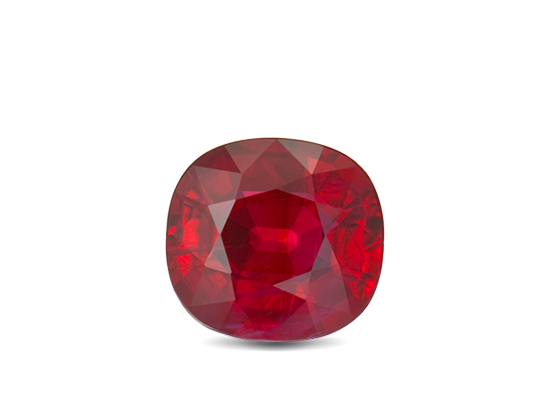
The Ruby represents love, passion, courage and emotion. For centuries, this gem has been considered the king of all gems. It was believed that wearing a fine red Ruby bestowed good fortune upon its owner. Rubies have been the prized possession of emperors and kings throughout the ages, and to this day remain the most valued gemstone.
A Ruby’s color is its most important feature. Rubies are available in a range of hues from purplish and bluish red to orange-red. The brightest and most valuable color of Ruby is often “a Burmese Ruby” — a rich, passionate, hot, full red color with a slight blue hue. This color is often referred to as “pigeon blood” red, a Ruby color only associated with the Mogok Valley mines in Myanmar. The color Pigeon Blood Ruby red is not associated with the color of a pigeon’s blood but rather the color of a white pigeon’s eye.
August
Spinel
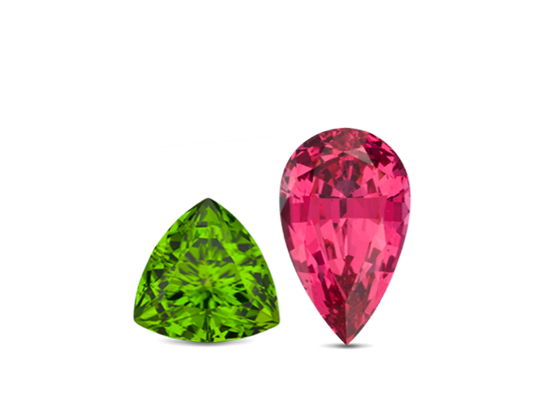
Centuries ago, Sanskrit writings referred to Spinel as the daughter of the Ruby. The bright red color of Spinel is so similar to that of the Ruby that the two are often confused with one another. Spinels are actually rarer than Rubies, but unlike Rubies, they can sometimes be found in large sizes.
In addition to beautiful rich reds, Spinel can also be found in shades of orange, beautiful pastel pink and purple. Of particular interest is a vivid, hot pink color with a tinge of orange that is mined in Burma. This is one of the most spectacular gemstone colors in the world and is truly unlike any other gem. Spinel also comes in beautiful blues, though these are extremely rare.
Believed to protect the owner from harm, to reconcile differences and to soothe away sadness, the Spinels true appeal is its range of rich, brilliant colors and affordability.
September
Sapphire
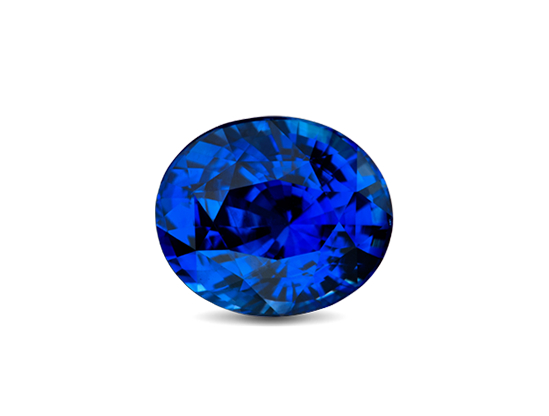
Upon hearing the word “Sapphire,” many immediately envision a stunning violet-blue gemstone. “Sapphire” is Greek for blue, after all. Since ancient times, the Blue Sapphire has represented a promise of honesty, loyalty, purity and trust. To keep with this tradition, Sapphires are one of the most popular engagement gemstones today.
Sapphire is found in many parts of the world, but the most prized Sapphires are from Myanmar, Kashmir and Sri Lanka. Sapphires with a highly saturated violet-blue color and a velvety or sleepy transparency are more rare. The purer the blue of the Sapphire, the greater the price. However, many people find that darker hues can be just as appealing.
Sapphires are not only blue. They also come in pink, yellow, orange, peach and violet colors. The most sought-after color of fancy Sapphire is the rare and beautiful Padparadscha — a pink-orange corundum with a distinctive salmon color reminiscent of a tropical sunset. These ultra-rare, ultra-expensive stones are among the most coveted gems in the world.
October
Opal
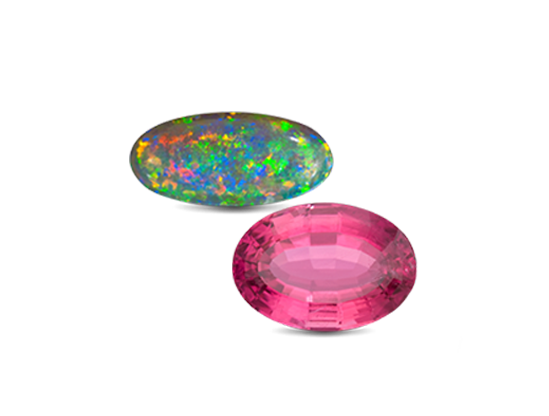
In ancient times, the Opal was known as the queen of gems because it encompassed the colors of all other gems. Each Opal is truly one-of-a-kind, as unique as our fingerprints. Some prefer the calming flashes of blues and greens; others love the bright reds and yellows. As you turn and move the Opal, the color plays and shifts, giving you a gem that can be worn with a plethora of ensembles.
Australia’s Lightning Ridge is known for its rare and stunning black Opals. The ideal Opal is one that displays broad patterns covering the surface in all colors of the rainbow. Be sure to choose the Opal that showcases your color preference and pattern.
Tourmaline
Available in a spectrum of colors and color combinations, Tourmaline lives up to its name, which means “mixed stone.” With a rainbow of colors, Tourmaline can easily enhance any jewelry collection. Cranberry red, hot magenta, bubblegum pink, peach and orange, canary yellow, mint, grass and forest green, ocean blue, violet… Tourmaline is all of these and more.
Tourmaline is also known for its ability to display several colors in one gemstone. These bi-color or tri-color gems are formed in many combinations and are highly prized. One multi-color variety is known as Watermelon Tourmaline and features green, pink and white color bands. To resemble its namesake, the gemstone is cut into thin slices with a pink center, white ring and green edge.
With Tourmaline available in so many colors, you’re sure to find one in your favorite.
November
Topaz
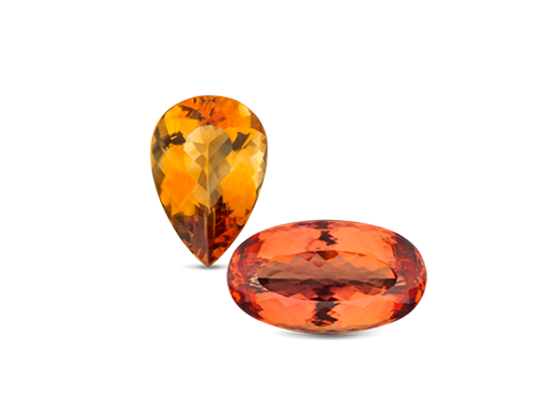
In shades of yellow, brown, honey, green, blue, red, pink and sometimes no color at all, Topaz has a broad range of appeal. It is most often found in amber gold, yellow or a blushing pink-orange, but a pale pink or a sherry red Topaz is highly exceptional. The most prized color of Topaz is called Imperial Topaz and features a magnificent orange with pink undertones. Blue, once the rarest color of Topaz, is the most common today due to man’s ability to enhance its color; Topaz with a naturally blue color is very rare.
The ancient Egyptians and Romans associated this golden gem with the sun god, giving it the power to protect and heal. Legend also says that Topaz dispels enchantment. With its worldwide mass appeal throughout the centuries, once you find that perfect Topaz, you’ll soon be under its spell.
December
Tanzanite
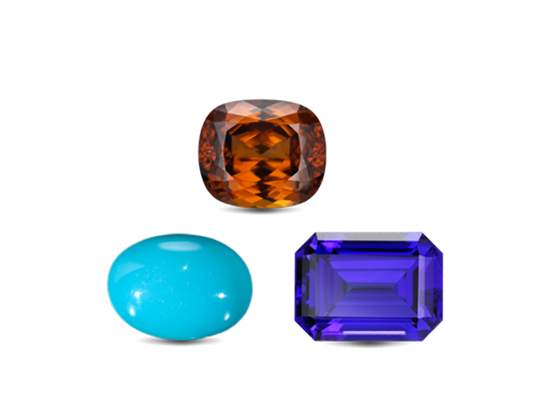
Tanzanite is a one-of-a-kind gemstone unlike any other and can only be found in one place on Earth: the foothills of Mount Kilimanjaro. This gem possesses an exotic velvety blue with a rich overtone of purple, making for a color that is truly unlike any other.
Tanzanite is one of today’s most popular blue gemstones and comes in a variety of shapes, sizes and striking colors. Tanzanite is rarely pure blue and almost always displays its signature overtones of purple. In smaller sizes, Tanzanite usually contains lighter tones and a lavender color while larger sizes typically display a deeper, richer and more beautiful blue.
Turquoise
Turquoise is among the oldest known gemstones and its popularity has spanned the globe for centuries. It graced the necks of Egyptian Pharaohs and adorned the ceremonial dress of early Native Americans. This beautiful robin’s egg blue gemstone has been attributed with healing powers, status and wealth, protection from evil and good luck.
Turquoise is an opaque, light- to dark-blue or blue-green gem with its finest color being an intense blue. Turquoise may contain narrow veins of other materials either isolated or as a network. They are usually black, brown or yellowish-brown in color. Known as the matrix, these veins of color are sometimes in the form of an intricate pattern, called a spider web.
Zircon
Most people think of a bright sky blue when they think of Zircon, but it is also available in beautiful earth tones of green, dark red, yellow, brown and orange. Today, the most popular colors of Zircon are the vivid blue and bright Caribbean Sea colors.
In the Middle Ages, Zircon was said to aid in resting, bringing prosperity, honor and wisdom to its owner.
Zircon’s spectrum of beautiful colors, its rarity and its affordability have all contributed to its popularity today. Some gem collectors seek out Zircon from different locations, capturing gems in every color of the rainbow — colorless, green, blue, yellow, brown, orange, dark red and everywhere in between.
Explore Gemstones
